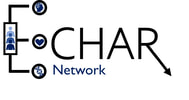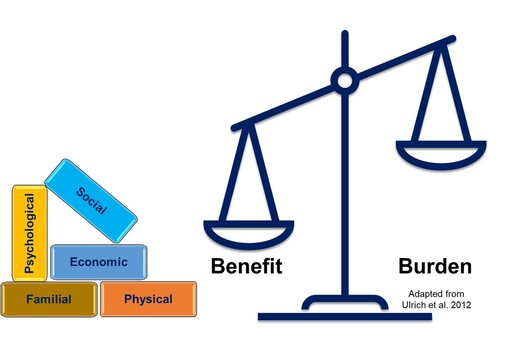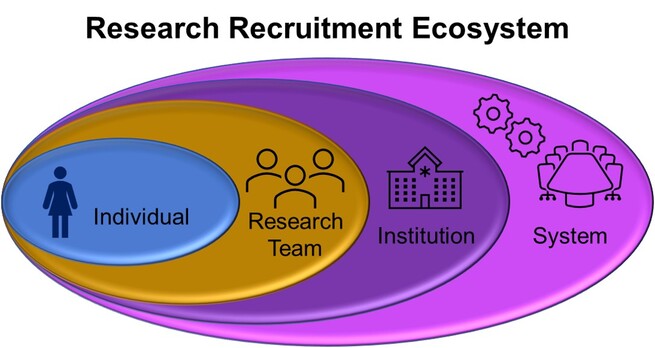Inclusion Science.When research samples are not representative of the population of interest, the validity of the findings is threatened. Additionally, the results may not be generalizable. Therefore, inclusion of diverse participants is vital.
|
The Recruitment DilemmaInclusion of Hispanic/Latino individuals in aging and Alzheimer's disease research is critical for reducing health disparities. However, recruitment efforts have been variably effective with diverse groups, and H/Ls continue to be underrepresented in research despite showing similar willingness to participate. This suggests other barriers exist that may be moderating the successful recruitment of diverse groups, including H/Ls, into aging research. This is a multi-factorial dilemma, involving proximal barriers at the level of the individual as well as distal barriers at levels outside of the individual's immediate control.
|
Barriers: ProximalAn individual recruited for research weighs several costs/benefits when making a decision to participate. These can include evaluating how participation will provide benefit or burden in terms of such domains as physical, psychological, and social well-being. With Hispanic/Latino individuals, familial and cultural well-being may play key roles in the decision making. Careful conversations with the individual approached for research can help clarify motivators and potential burdens.
In health-related research, some potential proximal facilitators include:
Some potential proximal barriers include:
|
Barriers: Distal
The research ecosystem involves several layers of influence outside of the individual's immediate control. As such, barriers can exist at the level of the researcher and the research team, the institution (e.g., medical, academic), and the overarching system (e.g., sociopolitical) within which the others exist. Well-designed studies and research teams with good intentions may experience challenges from higher levels of influence and find creative solutions to facilitate inclusive recruitment in their studies.
In health-related research, some potential distal facilitators include:
Some potential distal barriers include:
|
The Recruitment Solution
|
A one-size-fits-all approach to addressing barriers and disparities in recruitment may not exist. Instead, research teams may need to develop tailored, precision recruitment approaches that fit their needs. Different approaches may result in different profiles of people recruited. Researchers variably track which strategies they used and which were successful/unsuccessful. Nevertheless, a review of 95 studies on this topic suggested that the few research teams that most successfully engaged large minority samples relied heavily on extraordinary relationships with the community cultivated over time. In other words, effective recruitment must include culturally-responsive strategies to address barriers, improve communication, and increase community engagement.
|
Community engagement (CE) exists across a continuum with simple outreach as an initial stage. Consulting with communities, involving communities, and collaborating with communities reflect increasingly deeper levels of CE. Ultimately, CE at its deepest levels include an empowered community with shared leadership and strong bidirectional relationships between research teams and communities. These relationships can open avenues to community-based participatory research (CBPR). In CBPR, communities help identify the research questions and priorities as well possible approaches and solutions. Communities become part of the research infrastructure and help co-create knowledge.
Effective communication is vital to these and other culturally-responsive strategies. Identifying clear objectives and messaging, outlining a strategy and implementing it tactically, all while collecting and using data to adjust your approach, will likely lead to significant mutual benefits. |




